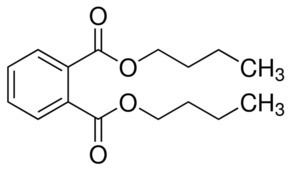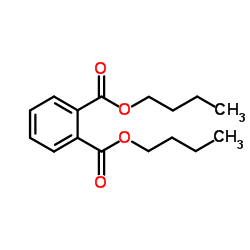Formula C16H22O4 Molar mass 278.34 g/mol IUPAC ID Dibutyl phthalate Soluble in Water, Ether, Alcohol | Boiling point 340 °C Density 1.05 g/cm³ Melting point -35 °C | |
 | ||
Appearance Colorless to faint yellow oily liquid | ||
Dibutyl phthalate
Dibutyl phthalate (DBP) is a commonly used plasticizer. It is also used as an additive to adhesives or printing inks. It is soluble in various organic solvents, e.g. in alcohol, ether and benzene. DBP is also used as an ectoparasiticide. DBP is also a putative endocrine disruptor
Contents

European Union

The use of this substance in cosmetics, including nail polishes, is banned in the European Union under Directive 76/768/EEC 1976.
The use of DBP has been restricted in the European Union for use in children's toys since 1999.

An EU Risk Assessment has been conducted on DBP and the final outcome has now been published in the EU Official Journal. To eliminate a potential risk to plants in the vicinity of processing sites and workers through inhalation, measures are to be taken within the framework of the IPPC Directive (96/61/EC) and the Occupational Exposure Directive (98/24/EC) Also includes the 2004 addendum.
United States

DBP was added to the California Proposition 65 (1986) list of suspected teratogens in November 2006. It is a suspected endocrine disruptor. It was used in some nail polishes; all major producers began eliminating this chemical from nail polishes in the Fall of 2006.
DBP was permanently banned in children's toys, in concentrations of 1000 ppm or greater, under section 108 of the Consumer Product Safety Improvement Act of 2008 (CPSIA).
Production
DBP is produced by the reaction of n-butanol with phthalic anhydride. It is or was produced in the United States by Eastman Chemical Company, but the company announced in March 2011 that it would end production and exit the DBP and DEP (diethyl phthalate) market in December 2011.
Exposure
Based on urine samples from people of different ages, the European Commission Scientific Committee on Health and Environmental Risks (SCHER) concluded that total exposures to individual phthalates in the general population are below tolerable daily intakes (TDI), except in the case of DBP for which efforts to further reduce exposures are needed.
Biodegradation
The white rot fungus Polyporus brumalis degrades DBP.
